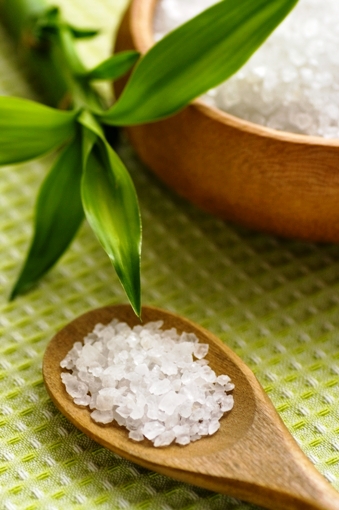In addition, we have many ritual uses for salt. Many religions use it to purify people or places, or to drive off malevolent spirits who may be hovering nearby. Symbolic of incorruptibility and immortality, salt is sometimes placed on the lips of the infant in Christian baptisms and sometimes salt is thrown into a coffin before burial. So, we are ritually salted when we enter and when we exit this world.
Across human history salt has also been widely used as medicine – with varying uses assigned to different types.
 Archaeological evidence for massive salt works from more than 8000 years ago have been found in Eastern Europe, with artifacts for the boiling of brine and the recovery of salt abound. But this large and complex Romanian salt works is already an advanced Neolithic industry – the harvesting of natural salt sources from the edge of saline lakes or directly from the sea is far more ancient and widespread than even that. It’s just that the small-scale gathering and porting from salt sources to another location leaves little evidence for archaeologists to find.
Archaeological evidence for massive salt works from more than 8000 years ago have been found in Eastern Europe, with artifacts for the boiling of brine and the recovery of salt abound. But this large and complex Romanian salt works is already an advanced Neolithic industry – the harvesting of natural salt sources from the edge of saline lakes or directly from the sea is far more ancient and widespread than even that. It’s just that the small-scale gathering and porting from salt sources to another location leaves little evidence for archaeologists to find.
Many animals seek out and consume natural sources of salt. Chimpanzees eat sodium-rich pith from raphia palm trees as a source of salt. Humans, on the other hand, add salt to foods that lack salt. At what point in our evolution did we start to do that? Japanese macaques throw rice into water to separate it from sand and possibly to salt it. They also teach this behavior to younger animals, who in turn, pass it on. So other primates – our distant cousins – are potentially salting some of their food as well. Unlike us, however, the macaque use of salt is currently limited to one or two food items – rice and possibly potatoes – and not used on a wide variety of items in their diet.
Salt gathering and production has often been tied to the rise of agriculture and the switch to large amounts of vegetable matter in the human diet. This link is based more on flawed assumptions and conjecture than on actual evidence. The first error is that pre-agricultural humans ate a lot of meat and that we got the salt required by our bodies from the consumed meat. We now know that the idea of “man the hunter” is a myth. Man the scavenger and gatherer with some consumption of fresh meat (and fish/shellfish) is a more accurate depiction of most early human diets. If anything, the consumption of meat increased with the rise of agriculture, because pastoral sources could then supplement hunting and fished meat sources. So if the meat-salt link is broken, what is there to link salt consumption and the rise of agriculture? Not a lot. I argue that salt gathering and production is rather an ancient practice for our species and its relatives – we have just not found much direct evidence of it yet.
The Arawak natives encountered by Columbus and his crew had knowledge of salt harvesting from the sea and already had a discrete division of labor in their society to include salt makers. (They also used the salt to preserve and flavor foods wrapped in leaves and to make a predecessor of today’s jerk-chicken, but that is a story for another day). Since native knowledge of saltworks predated European contact, this is indirect evidence of salt harvesting as knowledge that the earliest Paleo-Indians brought with them across Beringia some 20,000 years ago or more. We clearly have more digging to do.
These days, the availability of salt is yet another modern convenience we take for granted. Think about it next time you reach for a salt source when you cook or eat – you are holding nothing less than the history of humanity in your hand.
(Words by Laura Kelley; Photo of Sea Salt by Martateron@Dreamstime.com and photo of Harvesting Sea Salt from Google Images. Special thanks to the dancing bear for suggesting the topic.)

